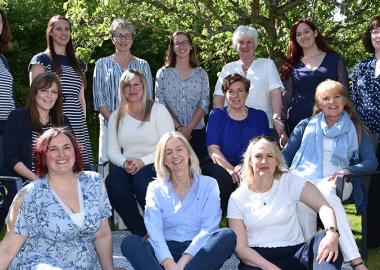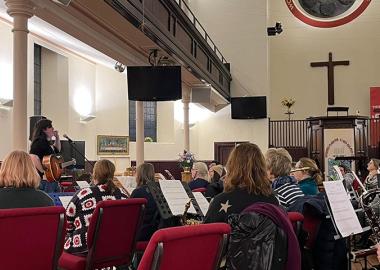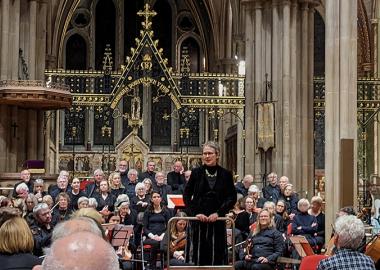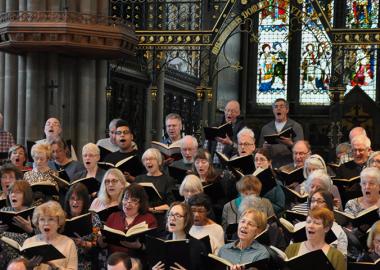Having met the GSA Choir at a few rehearsals (and social occasions), it was time to try out some ideas with them in a practical workshop.
We set aside an hour during the rehearsal on November 15th so that my mentor David Horne could be there but unfortunately Jamie, their conductor, was unable to make that evening. I’m pretty sure, however, that the choir will have filled him in on the details on his return!
Until this point I had been more of an observer/participant at rehearsals so I really wanted to use this opportunity to gain familiarity of working directly with the choir and for them to get to know me better in that sense too. I let them know that it was a chance for me to try out some different ideas and techniques, but that they wouldn’t necessarily make it into the final piece – it was more about experimenting and pushing the boundaries ever so gently.
I was keen to incorporate some non-vocal elements in parts of the workshop so I started by using some body percussion exercises as a way of breaking the ice. My aim was to utilise listening skills, use the whole body as an instrument and explore different rhythmic patterns and metre. After a slightly tentative start, the choir quickly gained confidence and really got into the swing of it, first with a single pattern call and response rhythm and gradually getting more ambitious, adding in different patterns on top to create a complex, driving rhythm. After the rehearsal, one member said I had totally taken him out of his comfort zone with this exercise but that it was a good sort of challenge and that he had really enjoyed it!
The second part of the workshop was inspired by an exercise which Fraser Trainer (one of the other mentors for the Adopt a Composer project) had demonstrated at our Composers’ Skills day in September. It focused on singing in modes and scales, using independent lines as opposed to a full unison choir sound so each singer can move freely at their own pace.
The effect this created was quite impressive and achieved very quickly, also sparking off some further ideas for how I might incorporate this in the final piece. I expanded on the initial exercise by asking the singers to walk around the open rehearsal space whilst singing these scales, again thinking of using the full body and movement as part of a potential creative and performative process.
To finish off, we experimented with a technique called hocketing, which dates back to the 13th and 14th centuries, however I discovered it more recently through Meredith Monk’s music and it’s something I’ve always been keen to try! It was great fun to have the freedom to experiment and try lots of different elements and styles in a workshop environment, and I hope that the singers got as much out of it as I did. The hour flew by so quickly and I really enjoyed getting to work more closely with the choir.
Now to get down to some writing!










